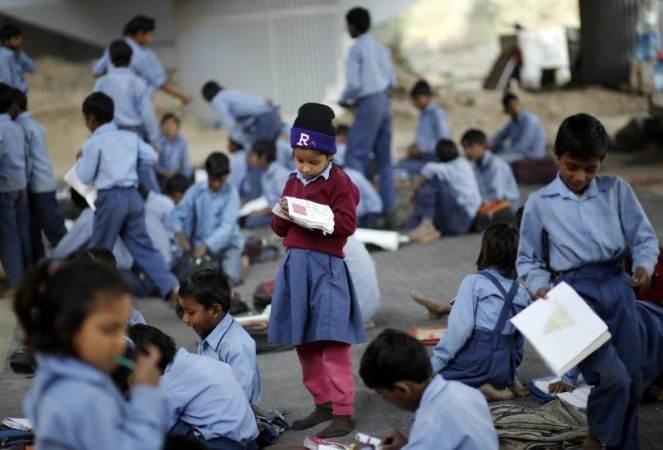Quality Education in Stagnation: India Plunges to 117th position in SDG Index 2020

India is positioned at 117 out of 166 countries in the recent Sustainable Development Report 2020 and Quality education (SDG 4) is in stagnation which means the rate of score remains stagnant or increases at a rate below 50% of the growth rate needed to achieve the SDG by 2030. Knowing the fact that India has low primary enrolment, secondary completion rate and literacy rate is not that satisfying, it becomes more challenging to tackle with them when there is an already unprecedented global health ongoing crisis shifting the attention and the resources towards the emergency needs.
Across the country, the state and the Central government started shutting down schools, colleges, universities and other educational institutions in order to contain the spread of deadly coronavirus. But this also raised concerns towards the ongoing educational challenges faced by the institutions to accommodate immediate solutions and also far-reaching economic and societal consequences. This pandemic has made us witness not just a global health, economic or a humanitarian crisis but have aggravated other consequences too and the quality of education to be imparted has been worst affected. Disrupting of the conventional methods of teaching and assessments have rather pushed us towards e-learning strategies and methodologies. But this poses a question whether we have that resilient infrastructure to accommodate the uninterrupted flow of education even in the remotest areas? Only a few private schools are able to make a balance with the virtual world as there is still lack of educational infrastructure for many low income private and government schools who have failed to do so leading to various missed opportunities for learning.
We all got familiar with a new culture that is work from home and at the same time Digital Divide was a notion which got really hyped up during this lockdown. Tackling with Digital Divide is a major concern as India is one of those countries where there is a huge gap in the enrollment and dropout ratio. And that gap has been widened up as there are vulnerable and marginalized communities in the semi-urban, rural and remotest areas where there is no access to internet services. Schools were the only go-to place for the children to learn and explore. They are the ones who are the most affected in terms of educational facilities and have somewhere been pushed towards an uncertain future. This is also leading to a huge gender gap as the girls are the ones who are most vulnerable and closure of these institutions are even contributing towards their high dropout cases. They are the ones who are disproportionately affected in this COVID -19 from losing job opportunities to domestic violence and abuses.
Another painful reality is the suspension of the midday meals, though the government has initiated to distribute dry rations. Midday meals were started with an objective to enrol more and more children in the primary education at lower levels and it served as an incentive for the children to join classrooms and for the parents to send them to the schools. But again, this pathway has been also closed due to his pandemic affecting the health of millions of children. As from a recent Lancet Study, the UNICEF has warned that three lakh children could die in India over the next few years due to disrupted health services and an upsurge in child-malnutrition cases. Closure of Institutions along with Digital Divide is not just weakening the educational culture but also leading towards the loss of human capital and economic opportunities. The impact is going to be grappling with low learning outcomes and high dropout rates.

As per the Sustainable development Report of 2020, the United Nations has advised the countries to transform the education by investing more in their education systems to strengthen their resilience, particularly by drawing on modern communication technologies. The crisis is accelerating the rollout of digital tools in schools and in remote education and training – tools that have been used in many countries to strengthen the resilience of education systems in the midst of the crisis. Further investments in education in science, technology, engineering and mathematics (STEM) subjects and in life-long learning are needed to accompany these transformations and boost skills.
The One Nation – One platform facility through PM E-Vidya platform and a dedicated channel for the students of class 1 to 12 is an initiative taken by the government to incorporate inclusive education but still there is a strong need to address the remote level challenges and a question as to how the government plans to make the education policy more comprehensive and inclusive as it seems that the virtual model of education is going to be the new definition of the mainstream education. Countries around the globe have to take immediate steps to build a resilient educational infrastructure.


















